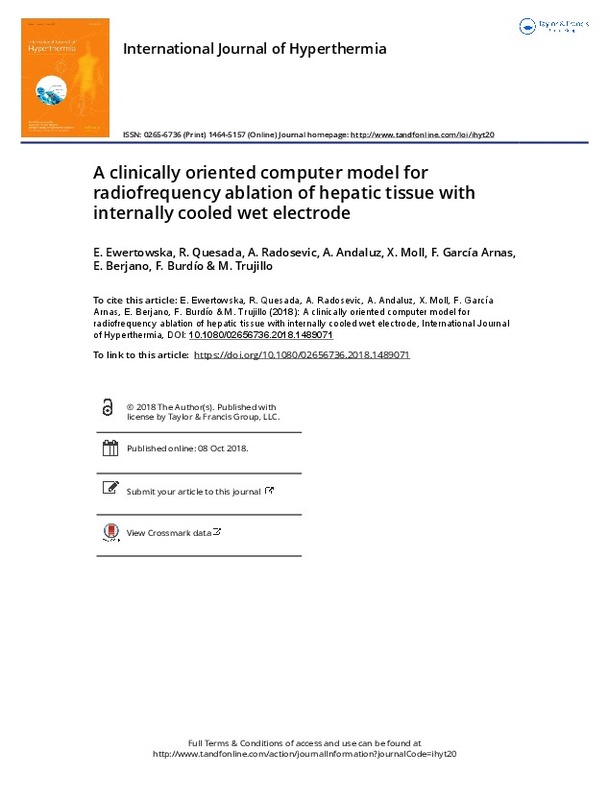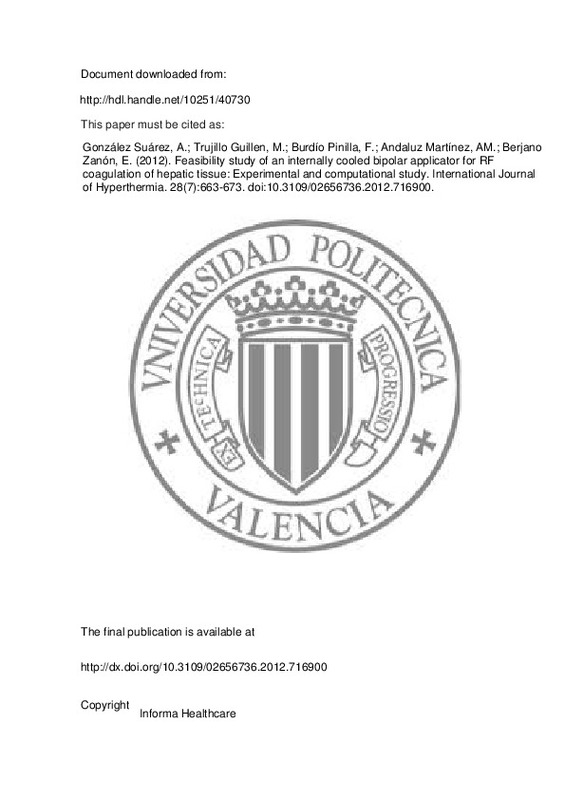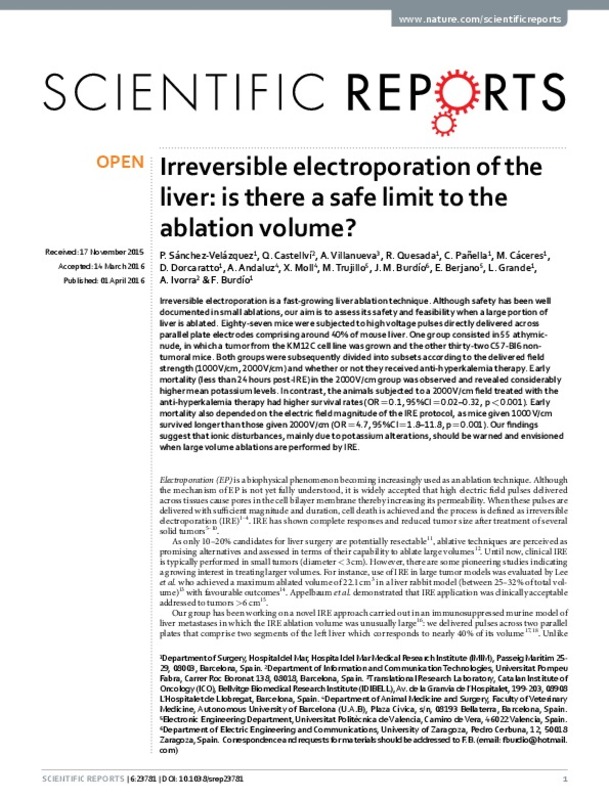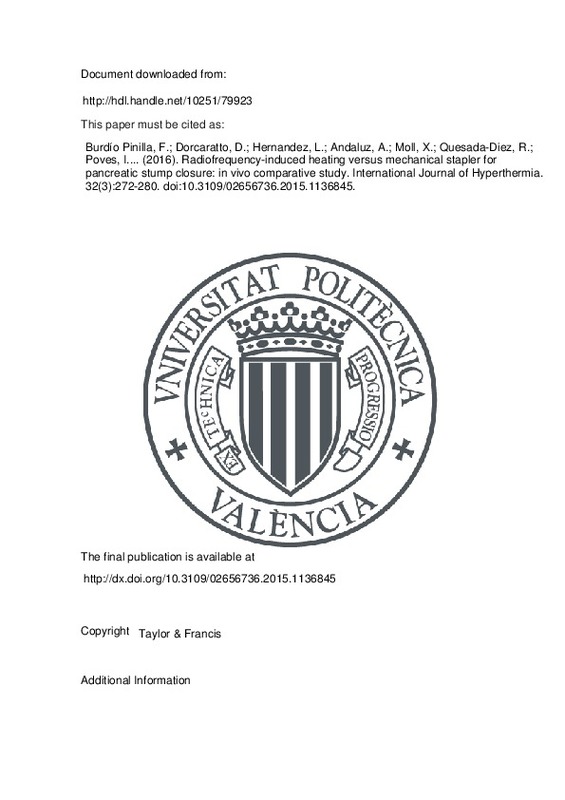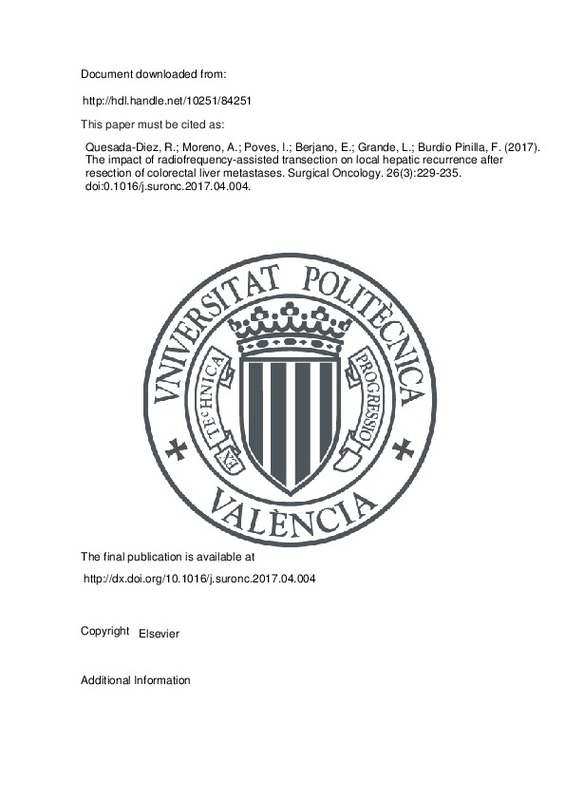

Listar por autor "Burdío Pinilla, Fernando"
RiuNet: Repositorio Institucional de la Universidad Politécnica de Valencia
- RiuNet repositorio UPV
- :
- Listar por autor
JavaScript is disabled for your browser. Some features of this site may not work without it.
Buscar en RiuNet
Listar
Mi cuenta
Ayuda RiuNet
Admin. UPV
Listar por autor "Burdío Pinilla, Fernando"
Mostrando ítems 1-7 de 7
-
Ewertowska, Elzbieta; Quesada-Diez, Rita; Radosevic, A.; Andaluz, Anna; Moll, Xavier; García Arnás, F.; Berjano, Enrique; Burdío Pinilla, Fernando; Trujillo Guillen, Macarena (Taylor & Francis, 2019)[EN] Purpose: To improve the computer modelling of radiofrequency ablation (RFA) by internally cooled wet (ICW) electrodes with added clinically oriented features. Methods: An improved RFA computer model by ICW electrode ...
-
Romero-Méndez, Ricardo; Tobajas, Pilar; Burdío Pinilla, Fernando; González, Ana; Navarro Gonzalo, Ana; Grande, Luis; Berjano, Enrique (Taylor & Francis, 2012)Purpose: The Cool-tip electrode is one of the most widely employed applicators in radiofrequency (RF) hepatic ablation. Previous research demonstrated that it is possible to enlarge coagulation volume when the single ...
-
González Suárez, Ana; Trujillo Guillen, Macarena; Burdío Pinilla, Fernando; Andaluz Martínez, Ana María; Berjano Zanón, Enrique (Informa Healthcare, 2012-12)Purpose: To study the capacity of an internally cooled radiofrequency (RF) bipolar applicator to create sufficiently deep thermal lesions in hepatic tissue. Materials and methods: Three complementary methodologies were ...
-
Quesada-Diez, Rita; Poves, Ignasi; Berjano, Enrique; Vilaplana, Carles; Andaluz, Anna; Moll, Xavier; Dorcaratto, Dimitri; Grande, Luís; Burdío Pinilla, Fernando (Taylor & Francis, 2017)Purpose: To evaluate the impact of using monopolar thermal coagulation based on radiofrequency (RF) currents on intraoperative blood loss during liver resection. Materials and methods: A prospective randomized controlled ...
-
Sánchez-Velázquez, Patricia; Castellví, Quim; Villanueva, A; Quesada, Rita; Pañella, C.; Cáceres, Marta; Dorcaratto, Dimitri; Andaluz, Anna; Moll, X.; Trujillo Guillen, Macarena; Burdío Pinilla, José Miguel; Berjano Zanón, Enrique; Grande, Luis; Ivorra, A.; Burdío Pinilla, Fernando (Nature Publishing Group, 2016-04-01)Irreversible electroporation is a fast-growing liver ablation technique. Although safety has been well documented in small ablations, our aim is to assess its safety and feasibility when a large portion of liver is ...
-
Burdío Pinilla, Fernando; Dorcaratto, dimitri; Hernandez, Lourdes; Andaluz, Anna; Moll, Xavier; Quesada-Diez, Rita; Poves, Ignasi; Grande, Luís; Cáceres, Marta; Berjano, Enrique (Taylor & Francis, 2016)Purpose: To assess the capacity of two methods of surgical pancreatic stump closure in terms of reducing the risk of pancreatic fistula formation (POPF): radiofrequencyinduced heating versus mechanical stapler. Materials ...
-
Quesada-Diez, Rita; Moreno, A.; Poves, Ignasi; Berjano, Enrique; Grande, Luis; Burdío Pinilla, Fernando (Elsevier, 2017)Resection is the gold standard in the treatment of liver metastases from colorectal cancer. An internal cooled radiofrequency electrode was described to achieve tissue coagulation to a greater margin width. The aim of ...
Mostrando ítems 1-7 de 7

Universitat Politècnica de València. Unidad de Documentación Científica de la Biblioteca (+34) 96 387 70 85 · RiuNet@bib.upv.es


